- 44th Tokyo International Motor Show 2015 |
|
|
| Previous Tokyo International Motor Show 2015 review :- 2011 - |
Main Topics at Tokyo 44th International Motor Show |
The Tokyo Motor Show comes every two years to demonstrate the innovations of the Japanese Auto Industry.
Japanese Hydrogen Fuel Cell Project
Toyota MIRAI Refueling Hydrogen |
Hydrogen Refueling Station Amagasaki City |
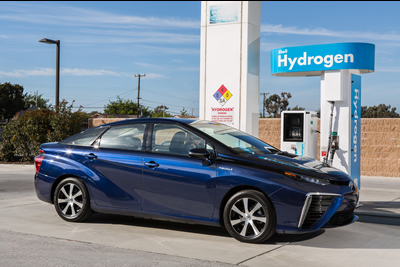 |
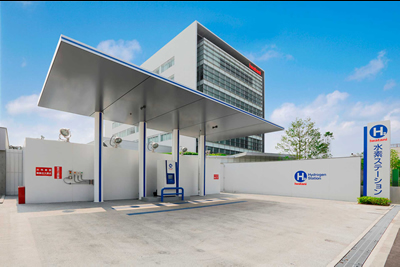 |
With the impressive Japan Hydrogen Fuel Cell Project under way for more than a decade, it make sense to discover Hydrogen Fuel Cell automobiles reaching the market like the Toyota Mirai or the just launched Honda FCV Clarity. The Toyota Mirai is on sale today but only in the regions where hydrogen is available at specialized refueling stations. There are today 23 hydrogen refueling stations in operation in Japan and 58 are under construction. This Japanese government program, after intense support for research and development for hydrogen as an energy source for transport and residence or office building, is now providing subsidy for Hydrogen refuelling infrastructure and purchase of fuel cell propelled vehicles. Hydrogen fuel cell technology allows electricity on site production as opposed to battery regularly charged by plug in to the electricity network. The real challenge is that hydrogen is not readily available and must be produced just like electricity. In both cases, a distribution infrastructure must be established. At the Tokyo Motor Show, there was also concept cars with this hydrogen propulsion mode like the Toyota FCV Plus, the Lexus LF-FC luxury sedan or the Mercedes Benz Vision Tokyo.
Autonomous driving
Autonomous Nissan IDS Concept
|
Autonomous Honda Walker Stand
|
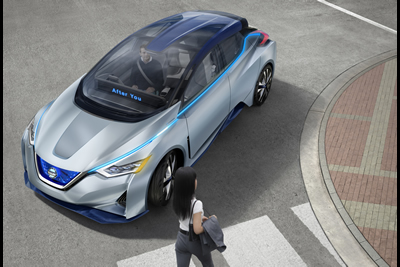 |
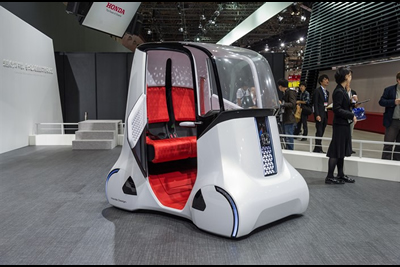 |
The Mercedes Benz Vision Tokyo is also a demonstration of the new autonomous driving technology just like the Nissan IDS Electric Concept announced to reach the market within five years. The original Honda Walker Stand could join this autonomous movement category.
Return of the Rotary Piston Engine
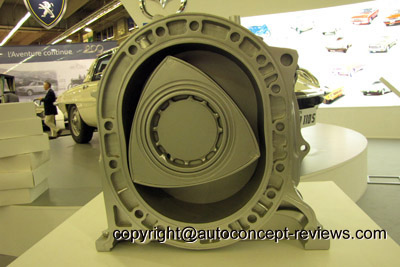 |
In the 1960s the Wankel Rotary Piston Engine appeared as the potential replacement of the "conventional" Reciprocating Piston Engine. More than forty manufacturers in the world took a license for the development and production of the newcomer. Mazda took the license in 1961 and launched the Cosmo in 1967. The main advantage was a great simplicity and compactness together with limited number of parts and limited vibrations . The drawbacks comprised high fuel consumption and polluted exhaust gases. Mazda was the only manufacturer to pursue the development and production. The production eventually stopped in 2012 with restriction in pollution. Mazda has pursued the development and now comes back with the RX Vision Concept intended for production. |
The Japanese Keijidosha popular mini car Category
There is always a wide selection of new ideas and original shape in the Keijidosha (light automobile) or Japanese mini vehicle category where the size is limited to 340 cm (11.2 ft) long for 148 cm (4.9 ft) wide but 200 cm (6.6 ft) high; the propulsion goes by a gasoline engine limited to 660 cc. This category is very popular in Japan with limited taxes, easy parking and low fuel consumption. Daihatsu, Honda and Suzuki are the specialists for this local market and present original concept vehicles among production models. |
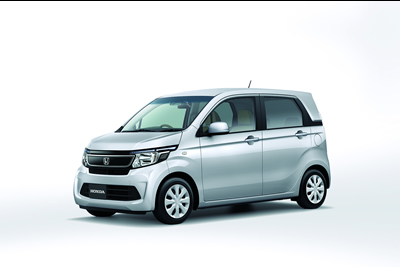 |
|
| |
Overview of some exhibits |
| |
Honda Clarity Hydrogen Fuel Cell
|
Honda has unveiled its next generation Clarity Fuel Cell today at the 44th Tokyo Motor Show. This new hydrogen fuel cell automobile follows the Honda FCX Clarity launched in 2008 and produced at 75 units for fleets in Japan, the United States and Europe.
With the new automobile, Honda has been able to achieve a level of interior space that allows five adults to be comfortably accommodated as would be expected in a conventionally powered sedan. The size of the fuel cell stack and the power generation unit have been reduced through Honda’s advanced technologies to a size comparable to a V6 engine.
The fuel cell stack are now 33% more compact than the stack used in the original FCX Clarity. This improvement is highly impressive as it has been achieved in parallel with an increase in maximum motor output to 130 kW (177ps) and a power density increased by 60% to 3.1 kW/L.
The Clarity Fuel Cell is equipped with a high-pressure tank capable of storing hydrogen gas at 70 MPa, increasing the mass of hydrogen that can be stored and extending the range of the vehicle. Coupled with the efficient powertrain and reduced vehicle energy consumption, the Clarity Fuel Cell achieves a vehicle range per full tank of over 700 km1 (435miles).
In addition, the high-pressure tank can be quickly refilled, the process taking approximately three minutes at 70 MPa and 20oC.
Honda Clarity Fuel Cell dimensions: Length 4,895 mm (192,7 inches) ; width 1875 mm (73,8 inches); height 1,475 mm (58 inches
See related reviews inside :
|
|
|
|
|
|
.jpg) |
 |
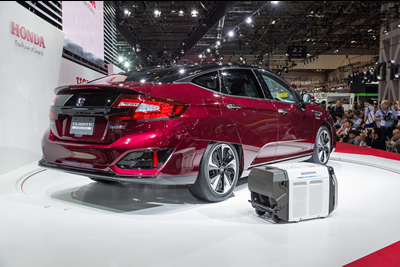 |
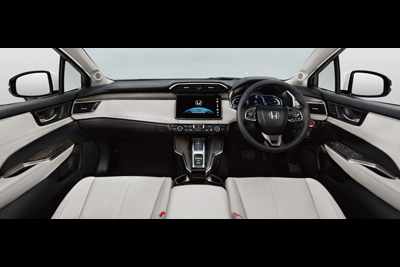 |
| |
Toyota FCV PLUS Hydrogen Fuel Cell Concept |
This Hydrogen Fuel Cell Car project is a show car representing an original Design study.
The fuel cell stack is mounted between the front tires, and the hydrogen tank behind the rear seat. Together with the adoption of independent in-wheel motors in all four wheels, this allows for a spacious cabin despite the vehicle's compact vehicle body. By concentrating functional parts at the front and the rear of the vehicle, this next-generation fuel cell vehicle package creates an optimal weight balance and a wide field of vision.
The exterior adopts a distinctive, sleek shape, while the frame structure of the interior ensures rigidity despite the light weight of the car. Altogether, the design conveys the vehicle's advanced technology and outstanding environmental performance.
It is an opportunity to demonstrate potential use not only in transportation but also in providing electricity by charging electric vehicle or serving as electricity source when supplied by external hydrogen source.
Dimension: Length 3800 mm, width 1750 mm, height 1540 mm, wheelbase 3000 mm.
See related reviews inside :
|
|
|
|
|
|
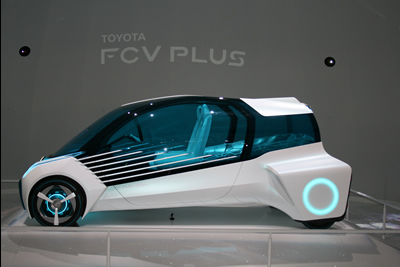 |
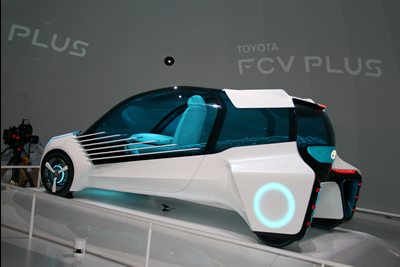 |
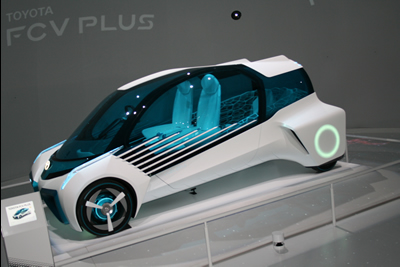 |
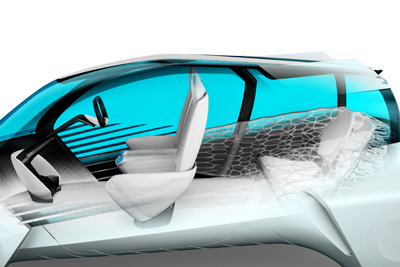 |
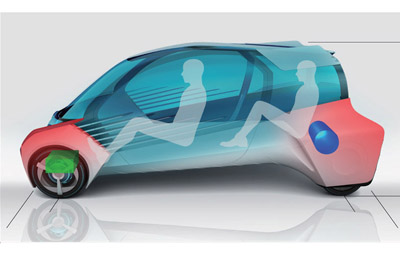 |
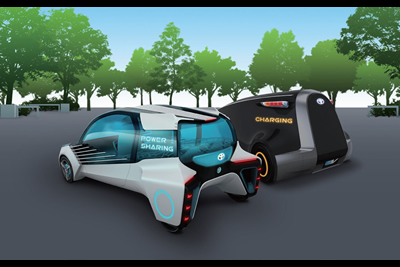 |
| |
Nissan IDS Autonomous Driving Electric Concept |
Nissan Motor Co., Ltd. unveiled a concept vehicle that embodies Nissan’s vision of the future of autonomous driving and zero emission Electric Vehicle: the Nissan IDS Concept.
Presenting at the show, Nissan president and CEO Carlos Ghosn said: “Nissan’s forthcoming technologies will revolutionize the relationship between car and driver, and future mobility.”
Nissan Intelligent Driving is Nissan’s concept of autonomous drive technology and represents what Nissan believes next-generation vehicles should be. “Nissan Intelligent Driving improves a driver’s ability to see, think and react. It compensates for human error, which causes more than 90 percent of all car accidents. As a result, time spent behind the wheel is safer, cleaner, more efficient and more fun,” continued Ghosn.
By 2020, expect to see Nissan Intelligent Driving technology deployed on cars in cities around the world.
The Nissan IDS Concept is fitted with a high-capacity 60 kWh battery connected to electric powertrain technologies, and thanks to its outstanding aerodynamics, low stance, flowing form and reduced weight due to its full-carbon-fibre body, the vehicle is designed to also meet the need to drive long distances. Other technologies on the Nissan IDS Concept include Piloted Park that can be operated by smartphone or tablet, and wireless charging technologies. Through these, the driver can leave parking and charging to the car.
Design Director Mitsunori Morita says: “By the time Nissan Intelligent Driving technology is available on production cars, EVs will be able to go great distances on a single charge. Getting to this point will, of course, require the further evolution of batteries, but aerodynamic performance is also very important. We incorporated our most advanced aerodynamic technology in the design of the Nissan IDS Concept.”
See related reviews inside : Nissan IDS Concept 2015, Autonomous electric vehicle |
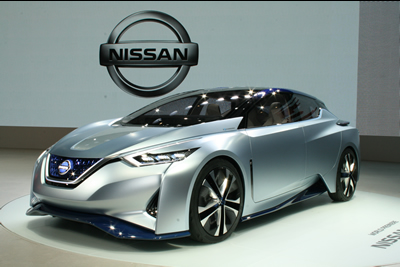 |
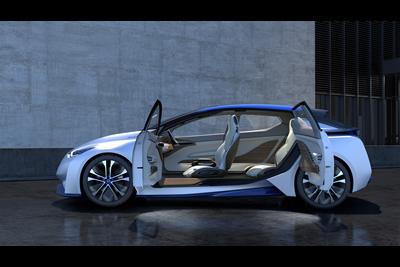 |
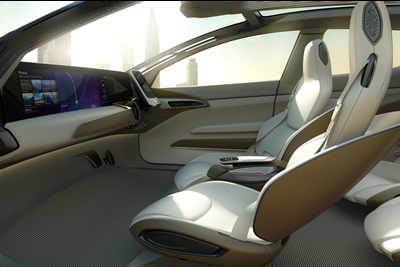 |
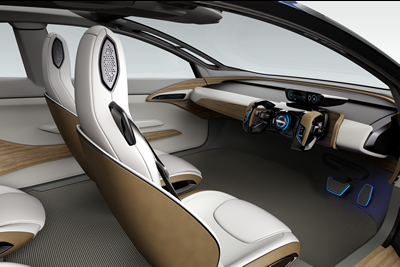 |
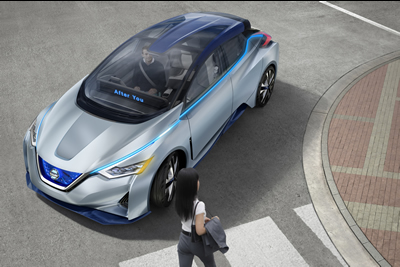 |
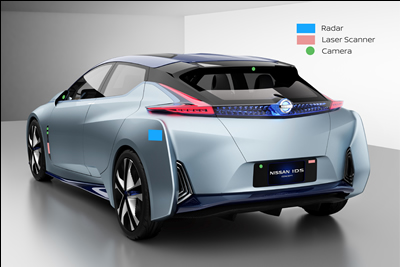 |
| |
Mercedes Benz Vision Tokyo Autonomous Driving Hydrogen Fuel Cell Vehicle |
The Vision Tokyo is the latest trailblazing spatial experience to come from Mercedes-Benz: its monolithic structure, futuristic design idiom and unique lounge ambience in the interior define it as luxurious, young and progressive – thus making it a fitting tribute to the sophisticated megacity and trendsetting metropolis that is Tokyo. Spatially efficient, versatile and intelligently connected, the Vision Tokyo – which is also capable of driving autonomously – is an urban transformer that reflects the growing youthfulness of the Mercedes-Benz brand.
Gorden Wagener, Head of Design at Daimler AG: “The Mercedes-Benz Vision Tokyo embodies the concept of an automotive lounge for a future generation of megacities. The purity and sensuality of the Vision Tokyo’s styling defines a new interpretation of modern luxury from Mercedes-Benz.”
The dimensions of the Vision Tokyo (length/width/height: 4803/2100/1600 mm) are comparable with those of a mid-series vehicle. Up to five passengers access the interior via the upward-swinging door on the left-hand side – ideal for the right-hand-drive traffic in Japan’s megacity. The conventional seating arrangement in rows is thus redundant, while there is also no “front” or “back” here: passengers take their seats instead on a large, oval-shaped couch. This unique lounge-style arrangement allows everyone on board to enjoy the benefits of autonomous driving.
The bodyshell of the Vision Tokyo has been designed to allow the crash-protected integration of a fuel cell-powered electric drive system. This is based on the trailblazing F-CELL PLUG-IN HYBRID of the F 015 Luxury in Motion and combines the on-board generation of electricity with a particularly powerful and compact high-voltage battery that can be charged without contact via induction. The use of pressure tanks made from CFRP is envisaged for the storage of hydrogen in the concept car. The electric hybrid system has a total range of 980 kilometers, of which some 190 kilometers are courtesy of battery-powered driving and around 790 kilometers on the electricity produced in the fuel cell.
See related reviews inside :
|
|
|
|
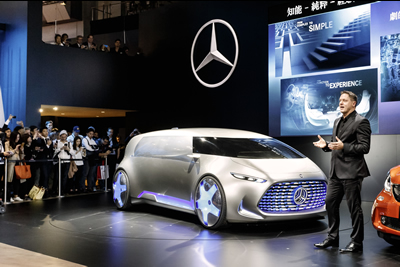 |
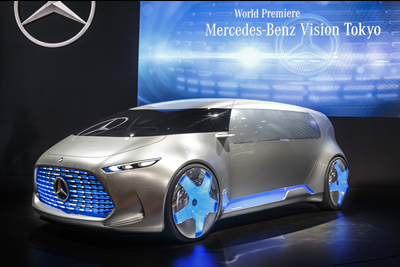 |
 |
 |
 |
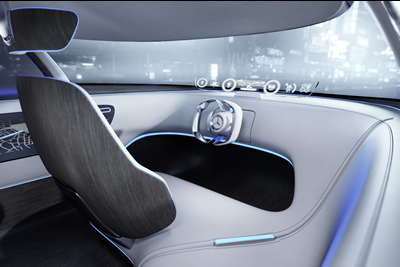 |
| |
Mazda RX-VISION-Return of the Rotary Piston Engine
|
Mazda Motor Corporation unveiled the Mazda RX-VISION at the 2015 Tokyo Motor Show. The sports car concept is powered by a next-generation SKYACTIV-R rotary engine, the unconventional technology that is perhaps the most compelling symbol of the carmaker’s challenger spirit.
An exquisitely proportioned front-engine, rear-wheel drive model, the RX-VISION represents a “vision” of the future that could only come from Mazda. And one that countless fans of the brand around the world hope will become a reality.
Rotary engines are unique in that they generate power through the rotational motion of triangular rotors (unlike the reciprocating pistons in conventional automotive engines). Overcoming numerous technical difficulties, Mazda succeeded in commercializing rotary power, first in the Mazda Cosmo Sport 110S in 1967 and then in several other models. The most successful of these was the Mazda RX-7, the most-sold rotary car ever with more than 800,000 produced between 1978 and 2002.
Continually striving to improve output, fuel economy and durability, Mazda was the only company to ever win the 24 Hours of Le Mans with a rotary-powered race car, a feat it managed in 1991 in the Mazda 787B.
Although not currently mass-producing any rotary models, Mazda never ceased its R&D activities.
See related reviews inside :
|
|
|
|
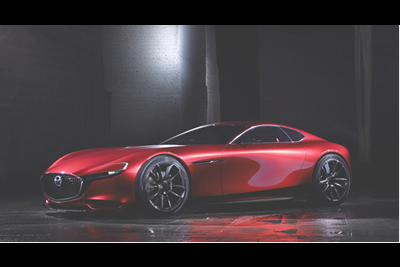 |
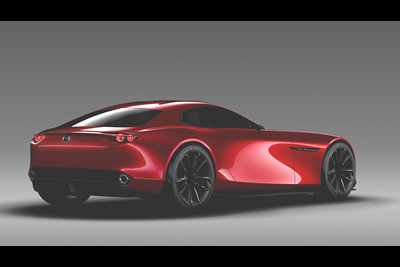 |
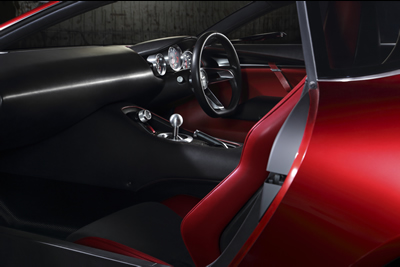 |
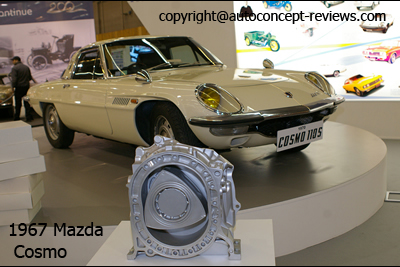 |
| |
Mitsubishi eX Electric Crossover Concept |
The MITSUBISHI eX Concept is a vision for a compact SUV powered by a next- generation EV system. In terms of design, overall it evokes the image of a sports crossover zipping nimbly around town as it merges the elegance and stylishness of a “shooting brake” (a term for a coupé with flowing styling fused with a hatchback car, the term originates from British hunting-use horse carriages) with compact SUV lines. The front end expresses a new interpretation of MMC’s Dynamic Shield front design concept. In both its exterior and interior, the MITSUBISHI eX Concept indicates the direction MMC Design is taking.
The next-generation EV system employs a high-capacity and high-performance battery together with compact high-output electric motors making it lighter and more efficient. With further weight reductions in the vehicle itself, it can provide a cruising range of 400 km.
Installing the drive battery beneath the body has lowered the center of gravity and together with its Twin Motor 4WD and S-AWC integrated vehicle dynamics control systems helps it provide handling control which faithfully reflects driver inputs as well as outstanding vehicle stability. |
 |
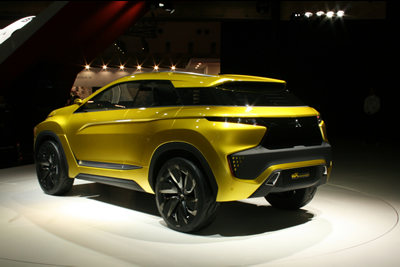 |
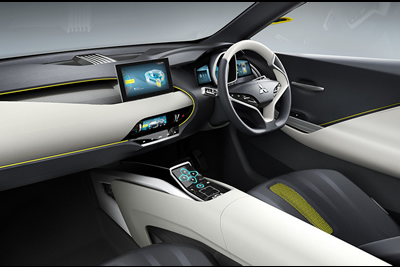 |
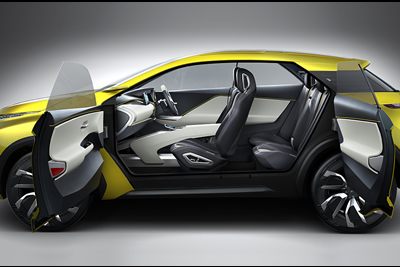 |
| |
Nissan Teatro for Dayz Electric Digital Generation Concept |
|
The Nissan Teatro for Dayz is a combination of mobile technologies unlike any previously proposed in a car. Combined with Nissan’s EV technology, this car represents a radical new way of thinking about how vehicles can be used. The Nissan Teatro for Dayz's simple, square design maximizes possibilities for communicating and sharing, both inside and out. The wide, open interior provides the perfect space for friends to gather, while the plain exterior features LED screens that enable further self-expression. Overall, the unusually simple exterior design creates a compact and grounded impression, with cleanly rounded roof and bumpers, wheels extended to the outer corners and radically short front and rear overhangs.
This is the first car designed specifically for the generation known as “digital natives.” Teatro for Dayz is more than a car for a generation of consumers accustomed to transformational technology and the freedom to use digital devices for sharing experiences.
“Designing a car to appeal to the generation we call ‘share natives’ required us to intentionally not use knowledge and tried-and-true approaches we had amassed,” says Executive Design Director Satoshi Tai.
Tai explains: “The interior can be visually altered according to one’s mood, for playing games, and in the blink of an eye to surprise friends. What Teatro for Dayz is, how it’s used, and what it could become are all up to the share native’s imagination.”
At first it may be surprising to see only a steering wheel and a flat instrument panel, but in this interior space conventional knobs and switches would limit display arrangement and expression. That’s why Nissan adopted voice control and motion sensors for the air conditioning and audio systems. In drive mode, meters and car navigation data are displayed on the instrument panel. When parked, it all disappears. Seats with bases that resemble balance balls feel radically different from the usual grip of a car seat, further signaling a departure from the conventional.
|
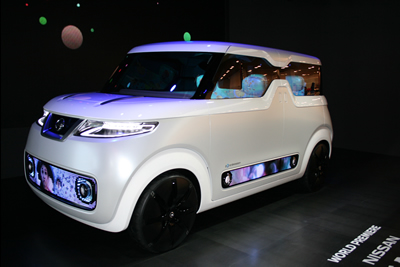 |
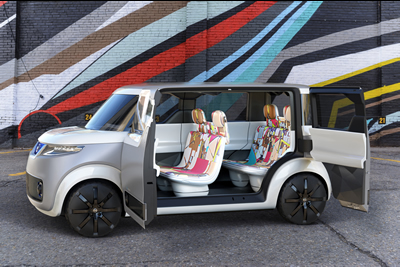 |
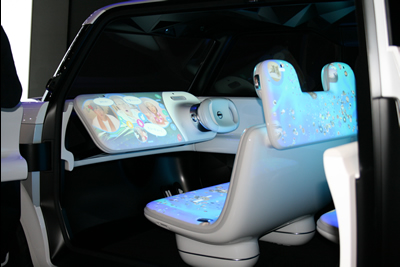 |
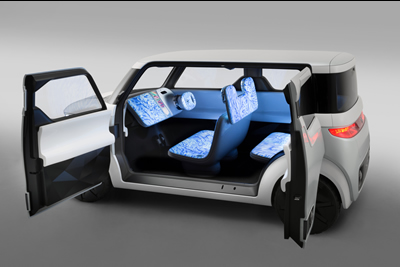 |
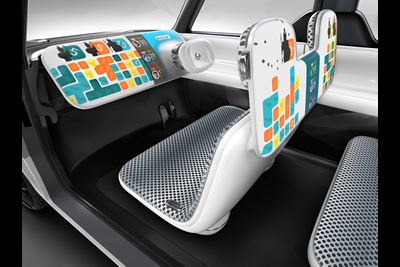 |
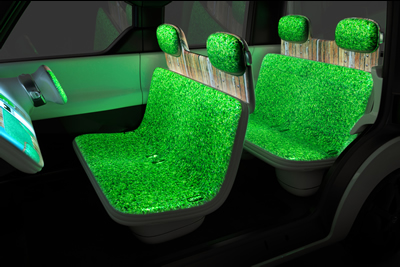 |
| |
Nissan Gripz Electric Concept |
The Nissan Gripz Concept, conceived by designers in Europe and Japan, aims to blend the ability and practicality of a compact crossover with the excitement and performance of a sports car. The Nissan Gripz Concept is an EV-based series hybrid sports crossover
|
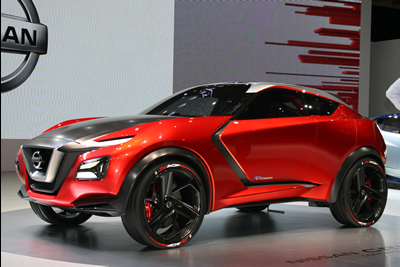 |
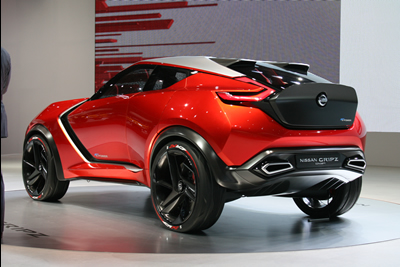 |
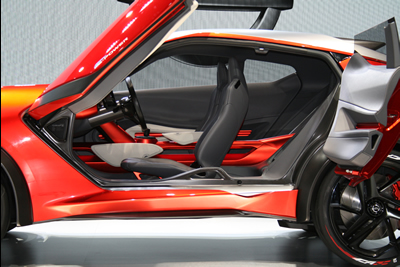 |
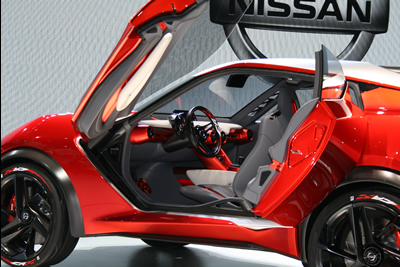 |
| |
Nissan Concept 2020 Vision Gran Turismo |
Nissan Concept 2020 Vision Gran Turismo, a concept supercar developed in conjunction with Polyphony Digital Inc., the creators of the racing video game Gran Turismo for PlayStation, is certain to further increase Nissan’s sizable presence in the game and beyond.
|
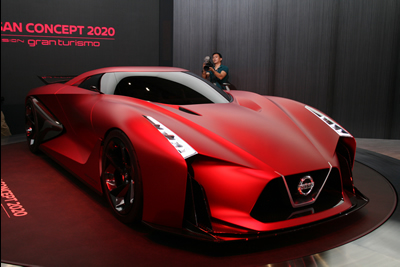 |
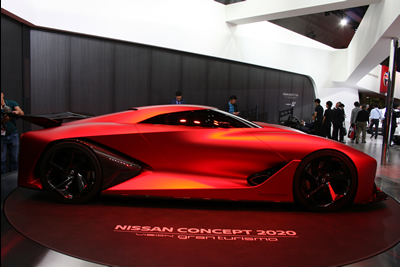 |
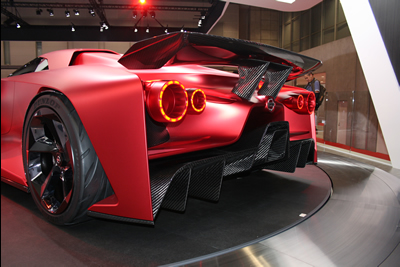 |
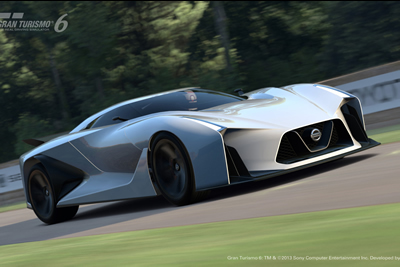 |
| |
New Nissan Leaf |
Since the Nissan Leaf’s launch in 2010, over 180,000 have been sold worldwide, making it the world’s best-selling EV. At this year’s Tokyo show, Nissan will exhibit a new grade offering a single-charge driving range up to 280 km (Nissan internal measurements based on Japanese driving conditions) and advanced safety technology—standardized across all grades for the Japan market—including Forward Emergency Braking, which is designed to help drivers avoid or mitigate the impact of frontal collisions, and Lane Departure Warning. Nissan plans to announce the latest Nissan Leaf grades for Japan in November and begin sales in December.
See related reviews inside :
|
|
|
|
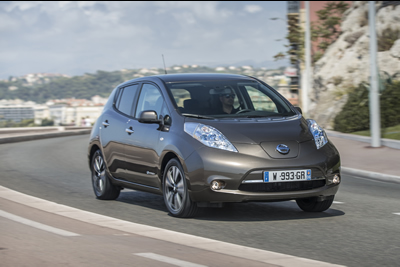 |
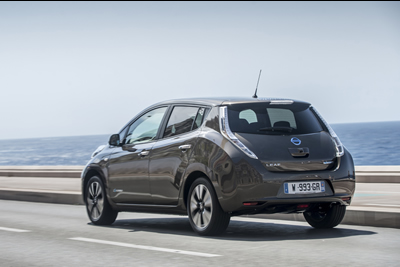 |
|
| |
KEN OKUYAMA KODE 9 |
Part race car, part sports car, the kode9 is a concept that employs stunning but simple proportions and a driving experience to rival some of today’s greatest sports cars. “This is my message to today’s car industry which seems stuck in a rut of overly complicated lines and styling based on the lowest-common-denominator,” says Okuyama.
This street-legal clubman racer incorporates the central section of a hydro-aluminum chassis, but with front and rear chassis sections specially designed and unique to this car. in-house developed wet carbon components, manufacturing technology using the latest 3D printers, Yamazaki Mazak’s precision CNC cutting technology and the latest aerodynamic trends in a package that tips the scales at just 890 kgs.
Powered by a Japan-sourced 2.0-liter, 4-cylinder engine with HKS supercharger, the kode9 generates an impressive 370 hp. All suspension components are unique to this coupe together with its fully adjustable suspension setup. And with specially fitted 4-pot Akebono brake calipers, the kode9 guarantees unlimited fun behind the wheel.
(source www.kenokuyamadesign.com) |
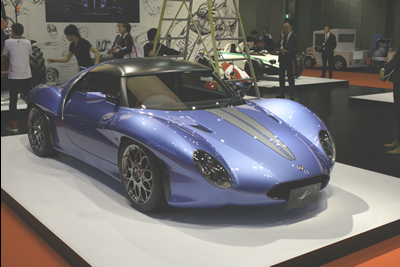 |
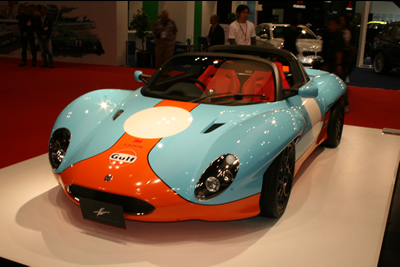 |
| |
Honda NSX 2016 |
The NSX is a super sports car for a new era. The new model features lightweight body construction and a new inline 3.5-litre V6 twin turbo engine as part of the three-motor SPORT HYBRID SH-AWD (Super Handling All-Wheel Drive) system. The engine is combined with three electric motors (two of which are housed in the front wheels) via a 9-speed Dual Clutch Transmission. The all-new NSX will be launched in Europe during 2016.
|
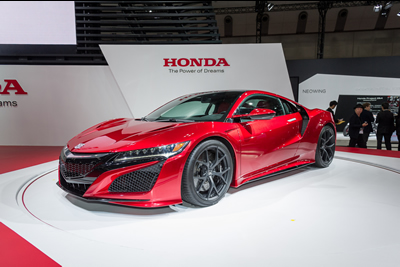 |
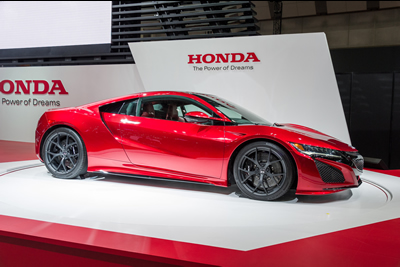 |
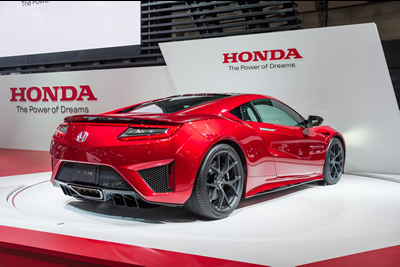 |
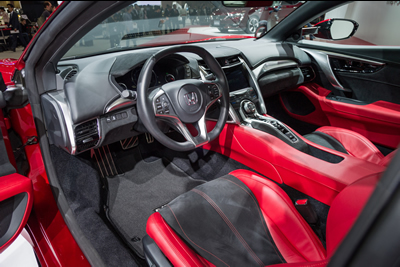 |
| |
Honda S660 - a K Car Roadster |
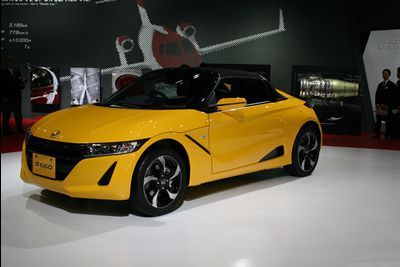 |
Honda displayed the all-new S660 open-top sports mini-vehicle intended for the Japanese market only. The S660, has been designed to deliver the same excitement as a fully-fledged sports car in a compact and efficient package. |
| |
Honda WANDER STAND and Honda WANDER WALKER concepts |
|
The WANDER STAND allows two adults to ride side by side to experience a new way to drive. Honda’s Omni Traction Drive System allows complete freedom of movement forwards, backwards, laterally and diagonally. The width of the concept allows it to access the most narrow of streets, while an automatic drive mode allows occupants to relax and explore new territory. |
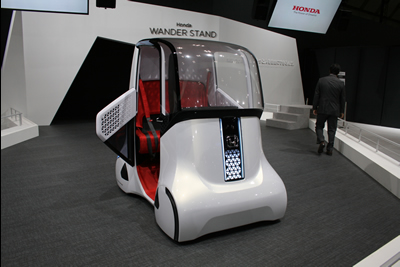 |
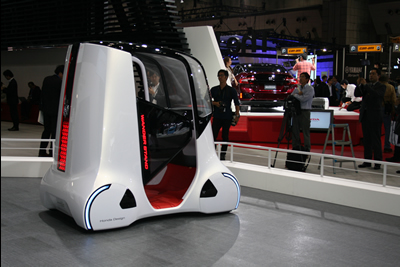 |
The WANDER WALKER is designed with the city of the near future in mind, where personal mobility solutions will give riders free access to all parts of their environment. The highly compact design is 540mm wide and can easily fit down narrow streets thanks to its innovative steering system. The concept also features a display tablet, which doubles as the key for the vehicle. |
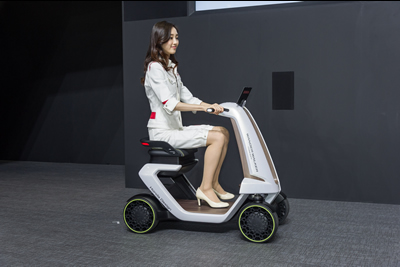 |
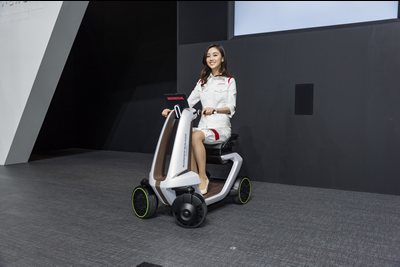 |
| |
Honda Project 2&4 powered by RC213V |
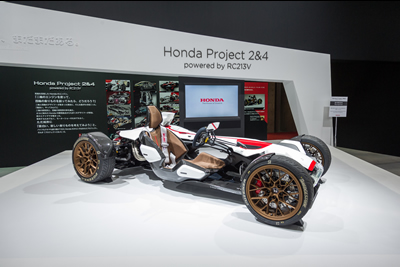 |
Following its global debut at Frankfurt Motor Show in September, the Honda Project 2&4 powered by RC213V will be on display at Tokyo Motor Show. Designed to deliver an immersive driving experience, Honda Project 2&4 utilises Honda’s expertise on two and four wheels to provide the freedom of a motorcycle and the manoeuvrability of a car.
The Honda Project 2&4 powered by RC213V is the winning entry from Honda’s ‘Global Design Project’, a competition amongst Honda’s global design team. . With a 14,000 rpm red line, the 1,000 cc engine is mated to a six-speed DCT gearbox and delivers peak power of 215 PS at 13,000 rpm, and peak torque of 118 Nm at 10,500 rpm. |
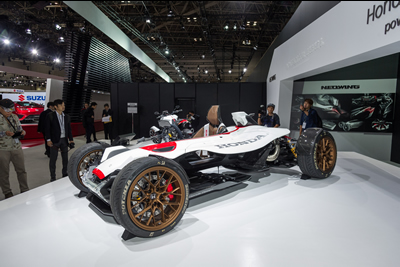 |
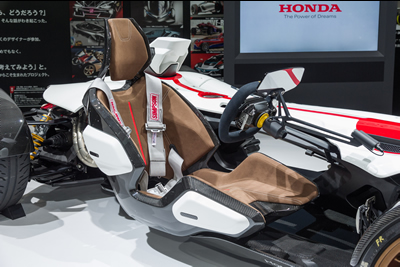 |
| |
Lexus LF-FC Hydrogen Fuel Cell Concept |
“Lexus wants to surprise and evoke emotion with its distinctive design and forward-thinking technology. For us, it is more than just a car, and we should exceed conventional imagination. The LF-FC expresses our progressive luxury and high-tech vision of a not so distant future.” Tokuo Fukuichi, Lexus International President.
The LF-FC features a fresh new styling theme that embodies Lexus’ “L-finesse” design philosophy. From every angle, the sedan is aggressively elegant, exuding the spirit of a grand touring vehicle.
The spacious interior of the LF-FC has been designed to wrap its occupants in a comfortable yet futuristic environment, while providing the driver with a highly-functional cockpit. The cabin has been designed in two sections, top and bottom. The top conveys a sense of openness, allowing the driver to concentrate on the road ahead without feeling constrained.
At the heart of the LF-FC is a high output fuel cell power system that energizes the rear wheels, and also sends power to two in-wheel motors in the front, making the LF-FC all-wheel-drive. This innovative drive system allows precise torque distribution control between the front and rear wheels, giving the full-size sedan exceptional dynamic handling and superior road stability. The strategic placement of the fuel-cell stack at the rear of the vehicle, power control unit at the front and T-formation configured hydrogen fuel tanks result in front and rear weight distribution optimal for a sporty sedan.
See related reviews inside :
|
|
|
|
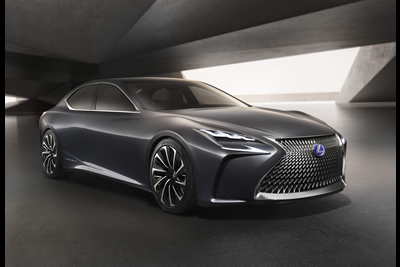 |
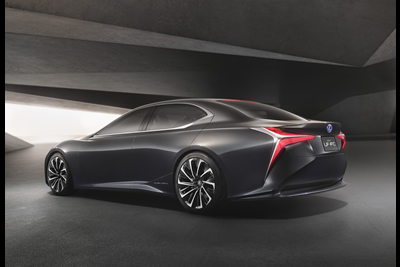 |
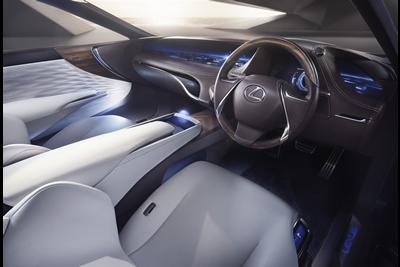 |
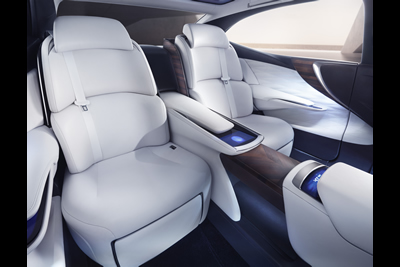 |
| |
Suzuki Mighty Deck Minicar Concept |
The MIGHTY DECK is a new, fun-oriented minicar with a canvas top and an open load deck that can be repositioned for diverse purposes.
An “urban/outdoor” concept is embodied by features that free people to move between contrasting situations and mind sets: city and nature; home and away; work and leisure or relaxed and playful.
Wide-ranging functionality including an automatic raise/lower function for the open deck accommodates lifestyle situations ranging from daily life to leisure. |
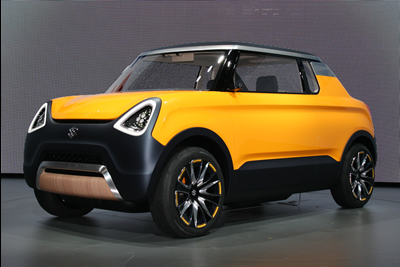 |
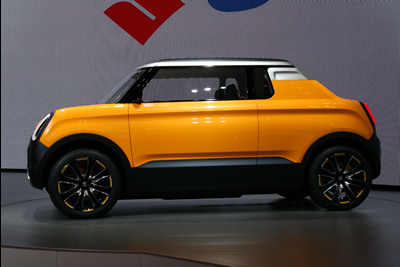 |
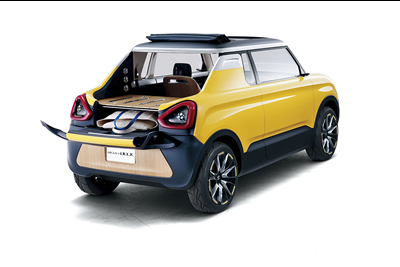 |
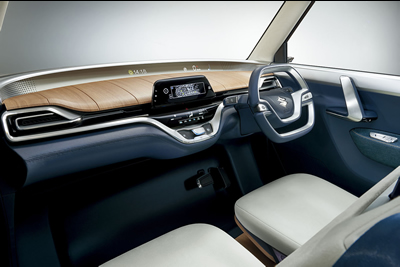 |
| |
Suzuki Air Triser Minivan Concept |
The Air Triser is a new-concept three-row compact minivan within a manageable body size, it offers a cabin where roominess and smart seat configurability embody the concept of a private lounge.
While the Air Triser is parked, the seats can be configured in a relaxation mode (where the seats face each other) or in a lounge mode (where the seats form a U-shape sofa). Users can enjoy media content from a smartphone on a large format display that extends from one of the B-pillars up to the roof line.
The extent to which the Air Triser enables users to enjoy their time together not only on the move but also while they’re stationary makes it unprecedented among minivans. |
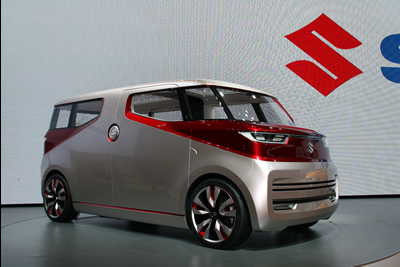 |
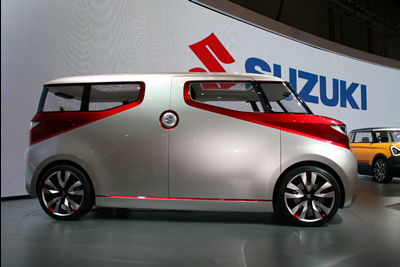 |
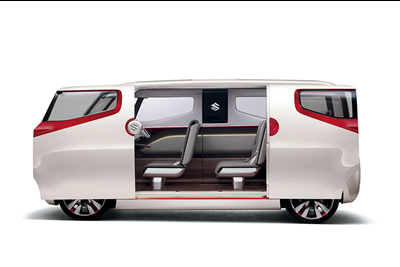 |
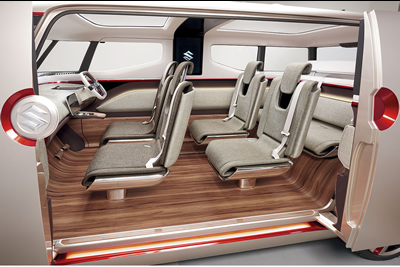 |
| |
|
Suzuki Ignis and Ignis Trail Concept |
The IGNIS shows how a compact car can straddle the boundary between daily life and leisure. A high eye point and plenty of ground clearance ensure day to day convenience. They also allow confident driving on snowy roads and rough tracks, so weekends become a chance to enjoy the great outdoors.
A compact, visually striking body and a simple, highly practical interior design highlight the IGNIS’s credentials in the compact crossover genre.
The IGNIS-Trail Concept expands upon the IGNIS concept of urban and outdoor versatility by offering even greater rough-road ruggedness.
Large diameter wheels and bold wheel-arch mouldings are included in a design package that heightens compact-crossover enjoyment by emphasizing the IGNIS-Trail Concept’s outdoor credentials. |
Suzuki Ignis Concept |
|
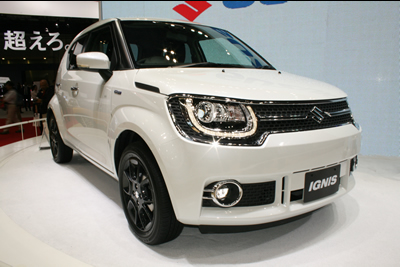 |
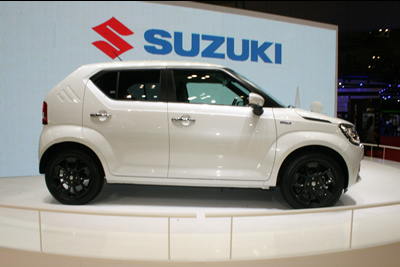 |
|
Suzuki Ignis Trail Concept |
|
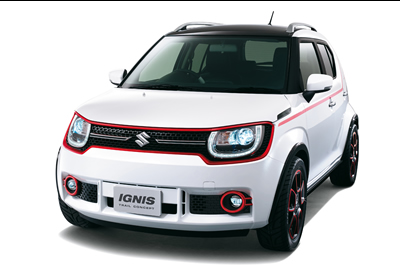 |
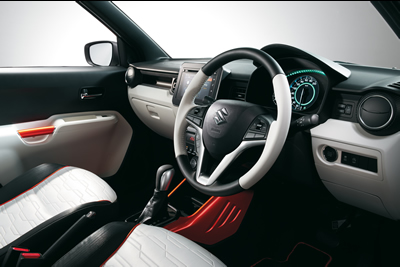
|
|
|
| |
BMW M4 GTS |
|
| |
Porsche inside Tokyo Motor Show
|
At the 44th Tokyo Moto Show, Porsche introduced two world premiere: the Macan GTS and 911 Carrera 4. The Macan GTS is the most agile version of the compact SUV from Porsche to date. The new Carrera 4 extends the model family of the new 911 by adding four all-wheel drive versions. It is available in a basic and S version, each as a coupé and convertible. |
| |
Porsche Macan GTS |
|
| |
Porsche 911 Carrera 4 |
|
| |
Subaru VIZIV Future Concept |
Subaru VIZIV Future Concept is a SUV-type concept model embodying the future vision of car development for “enjoyment and peace of mind” that Subaru wants to provide to customers. Along with a package of design features that motivate the owner to get out and get active, this car gives a look at next-generation technologies that will further enhance the reputation of Subaru for “enjoyment and peace of mind” in driving. Among them are the automatic driving technology resulting from the ongoing evolution of EyeSight, and the power unit combining a downsized turbo engine with a hybrid system. The Subaru VIZIV Future Concept gives a glimpse at the future Subaru has in mind for the brand.
|
| |
| |
Subaru Impreza 5-Door Concept |
|
| |
Toyota Prius fourth generation |
The new Prius has received an entirely new Toyota platform (Toyota New Global Architecture - TNGA). The model features a chassis that is 60 percent more rigid, while the powertrain unit's lower placement and low center of gravity has increased the vehicle's stability and comfort. This will result in improved handling, safety and heightened driving enjoyment.
Dimension: Length 4540 mm, width 1760 mm, height 1470 mm, wheelbase 2700 mm
See related reviews inside :
|
|
|
|
|
|
|
| |
Toyota S-FR Concept |
The Toyota S-FR is a concept vehicle that continues the proud heritage of Toyota's fun-to-drive lightweight sports cars. Pitched as an entry-level model, the new concept emphasizes responsiveness, and aims to make a whole new generation fall in love with driving.
The full-fledged FR layout gives the engine a front midship location. Optimal weight distribution and independent suspension make for outstanding cornering performance.
A six-speed manual transmission offers smooth acceleration, adding to the car's fun, responsive drive.
Dimension: Length 3990 mm, width 1695 mm, height 1320 mm, wheelbase 2480 mm |
| |
| |
Toyota C-HR Concept |
Like the new Prius, Toyota C-HR Concept makes use of TNGA, resulting in a highly rigid body. As a result of efforts to improve the already outstanding handling stability and ride comfort, the vehicle responds to driver handling with a directness that gives the driving experience an intuitive feel.
Toyota aims to give the concept an engine with thermal efficiency of over 40 percent, as well as further improving fuel efficiency by making the hybrid system smaller and more lightweight.
The Toyota C-HR concept made its first appearance at the 2014 Paris Motor Show as a design study, following which an updated five-door model went on display at the 2015 IAA Frankfurt Motor Show. Toyota hopes to show a production-ready model at the Geneva International Motor Show in March 2016.
Dimension: Length 4350 mm, width 1850 mm, height 1500 mm, wheelbase 2640 mm
related review : Toyota C-HR Concept 2014 |
| |
| |
New generation MINI Convertible |
Increased dimensions of the new MINI Convertible as compared to predecessor model by 98 millimetres in length, 44 millimetres in width and 1 millimetre in height; longer wheelbase (+ 28 millimetres); larger track width (+ 42 millimetres at the front, + 34 millimetres at the rear); optimised space comfort on all four seats; new front seats with larger adjustment range; more comfortable entry and longer seat surface for rear passengers; also more clearly emphasised single-seat character with optimised lateral support at the rear; luggage volume expanded by approx. 25 per cent to 215 litres with closed top and 160 litres with open top.
Market launch of the new MINI Convertible with three engine variants (combined fuel consumption; 6.0 – 3.8 l/100 km; combined CO2emissions: 139 – 100 g/km); new engine generation with MINI TwinPower Turbo Technology; 3-cylinder petrol engine with 100 kW/136 hp in the MINI Cooper Convertible, 4-cylinder petrol engine with 141 kW/192 hp in the MINI Cooper S Convertible, 3-cylinder diesel engine with 85 kW/116 hp in the MINI Cooper D Convertible.
related review : All Mini's inside autoconcept-reviews.com |
| |
| |
Daihatsu D Base Concept |
Daihatsu exhibited the D-base, a vehicle that embodies the concept of the next generation compact cars of Daihatsu. The Daihatsu D Base fit in the small K car category in Japan that fit in dimensions length 340 cm (134 inches) width 148 cm (58 inches) and height 200 cm (78 inches) with a gasoline engine limited to 660 cc. |
| |
|
| |
Daihatsu Noriori Minibus Concept |
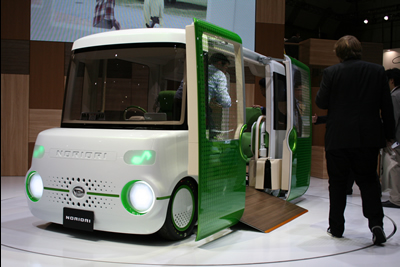 |
The NORI ORI focuses on the issue "getting in and out of a car”, the first hurdle faced by anyone who uses a car. Daihatsu proposes the idea of "the multi-use commuter of the near future", aiming to create an easy access compact car equipped with an ultra-low-floor, 2-way access doors that open widely, and an electric retractable slope for a wide range of uses, such as loading a stroller or wheelchair. A retractable slope is set near the front passenger seat, and a floor lift is set at the rear side. In addition, the flat floor makes it easy to move inside the car. These features are all designed to make it easier for people to get in and out of a car. There are sufficient amount of floor space to carry two unfolded wheelchairs |
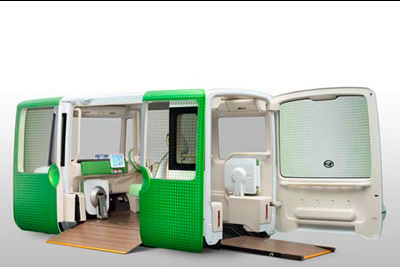 |
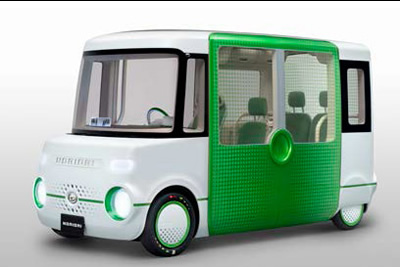 |
|
| |
Daihatsu TEMPO Mini Commercial Truck Concept |
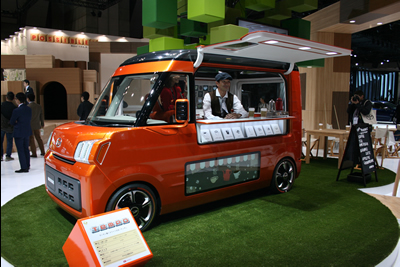 |
The TEMPO presents the idea of “a new genre-space commercial vehicle,” creating a new form of mini commercial vehicles that make full use of the front engine front drive K mini car platform.
It features a large gull-wing door with LED lighting installed on the passenger-seat side.
The digital sign mounted on the side of the vehicle can be used as a signboard.
The Daihatsu Tempo Concept is a moving sales vehicle that makes full use the flexible floor space. |
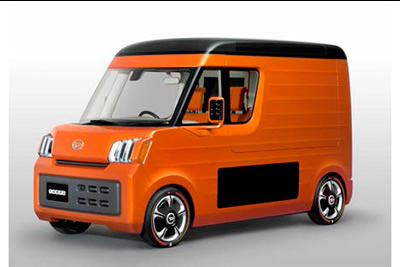 |
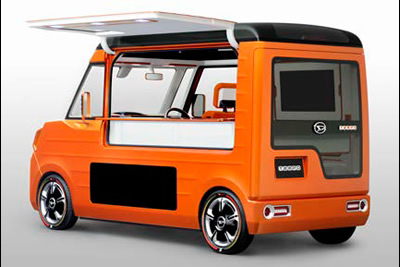 |
|
| |
Yamaha Sports Ride Concept |
| |
| |
Toyota Kikai Concept |
This concept takes the machinery, normally hidden beneath the vehicle body, and makes an open display of its beauty. Directly expressed in this way, the vehicle's inner workings become part of the exterior. In addition to the carefully designed form, continued into details including the fuel tank, reserve tank, and exhaust pipes, the analog-style meters and switches offer an engaging dialog with the machinery.
The small window at the driver's feet is another distinctive aspect of this car's structure, communicating the movements of the tires and suspension and the rush of speed along the road surface. Through the windshield, the movements of the upper control arm are also visible. This provides a novel driving sensation in which the machinery that supports the operations of cruising, turning, and stopping in ordinary everyday driving can be directly perceived with the senses.
The adoption of a central driver seat, which places the driver at the heart of the car, gives a more instinctive sensory connection with the vehicle. The optimal spacing between the three passenger seats achieved by their triangular layout creates a congenial in-cabin communication space. The expansive side window that reaches up to the roof delivers full enjoyment in urban and natural landscapes alike.
Dimension: Length 3400 mm, width 1800 mm, height 1550 mm, wheelbase 2450 mm |
| |
| |
Nissan Note Nismo S |
Ever since the release of the Juke Nismo in February 2013, the lineup of Nissan’s specialty division, Nismo, has steadily grown. Soon after the launch of the Juke Nismo, the March Nismo, Fairlady Z Nismo and Nissan GT-R Nismo were added to the stable; thus allowing Nismo to offer a broad range of road-going cars to the public—from compacts to SUVs to sports cars—all armed with the sporty DNA derived from Nismo’s motorsports activities.
The Note Nismo represents the sportiest iteration in the Note lineup and the fifth vehicle to be marketed under the revitalized Nismo production-car banner. In order to satisfy the needs of both the hardcore motorsports fan as well as the causal sports driving enthusiast, Nissan will offer two grades for the Note Nismo, the standard model and the Note Nismo S.
The Nismo S is equipped with a specially-tuned engine mated to a 5-speed manual gearbox, a combination that allows the driver to tap into the powerplant’s fruitful supply of low-end torque, resulting in a thoroughly pleasurable driving experience. This time the engine is a 138 hp 1.6 Litre.
|
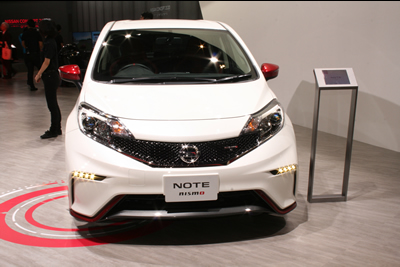 |
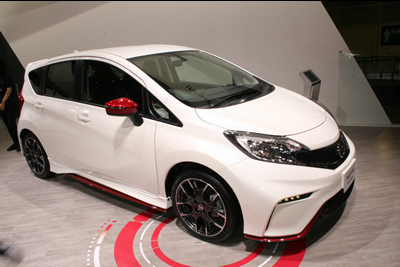 |
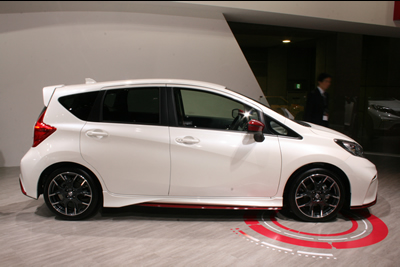 |
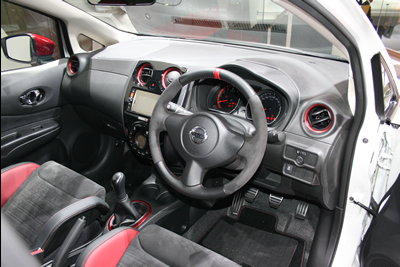 |
|
| |
Paul Damiens, Kenn Damiens, illustrations sources by Newspress and manufacturers media archives |
|








